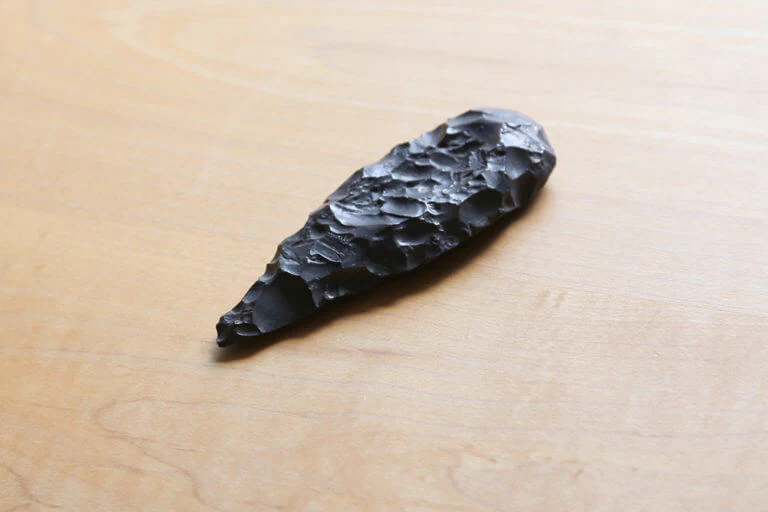The origin of human culture.
It began with shaving.
Obsidian stone blade
As far back as prehistoric times, humans are believed to have begun to use blade-like objects to remove beards and body hair, and to trim the hair on their heads. During the Paleolithic period, shells, animal bones, shark teeth, and flint were fashioned into blades. It is also believed that Stone Age man was forced to shave as a means of self-defense to avoid having his beard grabbed in battle. It can be said that the race for survival gave birth to the roots of the razor.

Although Neolithic man is presumed to have used obsidian stone blades, a 1963 report by a Japanese scientific survey team documented that aborigines living in the highlands of New Guinea were seen shaving by holding an unequal triangle of obsidian in their hands and pinching their whiskers.
Bronze Blade
It is known that in ancient Babylonia, a promise to a beardless man could be rebuffed, and conversely, in Egypt, people shaved their beards and heads on their chins. It is said that a clean-shaven face without a beard indicated high status. According to the religious practice of the time, demons living in the body would flee from the head toward the heavens, so they shaved off their hair and beards. Some kings shaved their beards and wore gold or silver imitation “fake beards” on their chins.
The custom also spread among the Greeks and Romans around 330 B.C. during the reign of Alexander the Great as a means of defense against the enemy grabbing one’s hair in white combat. As the custom of shaving gradually spread to most parts of the world, men from tribes that did not practice shaving came to be called “barbarians,” meaning “unbarberd.
With the discovery of bronze tools came the production of blades in a variety of shapes. In Europe between 1400 and 1000 B.C., razors with rectangular blades and spiral-shaped grips were widely used. It is also thought that they were used in rituals, as they are engraved with pictures and characters based on mythological themes.

It is reported that an axe-shaped razor blade was used in Egypt in the 14th century B.C., and that a form similar to today’s leather (Western razor) appeared during the New Kingdom period. It is said that the folding double-edged razor, known as the leather, came into use in the Roman period around the 6th century BC. The double-edged folding razor first used in Rome spread to the general public, but it was Scipio, a Roman statesman and general, who is credited with popularizing the practice of daily shaving. There is also a record of a crescent-shaped razor in ancient Greece in 325 BC.
It was not until the Middle Ages that it spread to Europe in earnest. It was only after the development of the cutlery industry.
